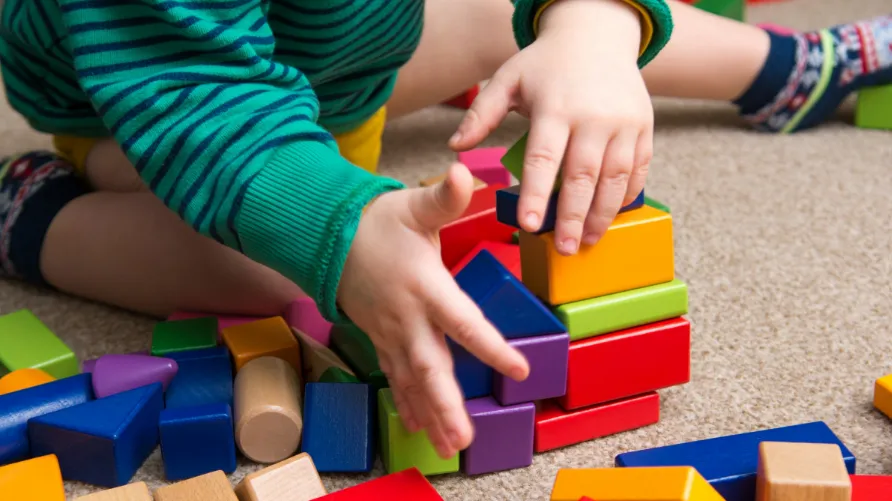
Neuroatypia in children: understanding for support

What is neuroatypia?
To begin with, we feel it’s important to stress that this term is used in a spirit of respect and without value judgment. Without an official definition set in stone, we can describe neuroatypia as “a neurological or psychological mode of functioning that differs from the usual standards”. Rather, it highlights cognitive profiles that deviate from what is generally considered “the norm”.
Launched in the 90s by Judy Singer, sociologist and mother of an autistic child, the term neuroatypia invites us to a more fleshed-out and nuanced understanding of human diversity. Towards the end of the 90s, other terms also emerged to convey the same concept: “neurodiversity”, “neurological plurality” and so on.
These may include, but are not limited to:
- ASD (Autism Spectrum Disorder),
- ADHD (Attention Deficit Disorder with or without Hyperactivity),
- “Dys” disorders (dyslexia, dysphasia, dyspraxia, etc.),
- The HPI (High Intellectual Potential),
- And many others.
These neurological peculiarities, far from being seen as defects, modulate the way we see the world, interact with others, learn or process information. 💬
✏ Note : we speak of “neuroatypicals” and “neurotypicals” to distinguish two major families of individuals. “Neuroatypics” are those whose brain functioning deviates from the norm, while “neurotypicals” represent those whose functioning is within the limits of the norm, in a given population.
Valuing the differences of neuroatypical children
To best support these children, it’s best to value their differences rather than conform them to a “neurotypical model”. Each diagnosis implies specific and distinct needs. Accommodations are different for a Dys child and an HPI child, for example.
For example:
- The creation of a quiet space where the child can recharge when feeling overloaded
- A reading hut for a child who finds solace in books
- A cosy corner with cushions for those who need soothing sensory stimuli
- An improvised fort for a child who appreciates the sense of security it provides
- Noise-cancelling headphones for children with concentration difficulties
- Procedural cards for children who need to structure their thinking when learning.
These arrangements must be thought out with the particularities of each child in mind, to offer them the best possible support in their development. 💕
Greater support at school
Neuroatypia does not imply inferior intelligence, but simply a different thinking system, which can be a source of difficulties but also of exceptional abilities. School support for neuroatypical children is crucial and must be designed to meet their unique needs.
Tailor-made learning methods
These children benefit from teaching methods that respect the way they process information: the use of visual aids for some, or a playful, procedural approach for others. The aim? Facilitate their understanding and highlight their skills.
School integration
Successful school integration for a neuroatypical child also relies on raising awareness and training teachers and students in neurodiversity.
This is crucial: it raises questions of resources among teachers eager to receive the training they need to better understand and support their neuroatypical students.
Following the rhythm imposed in class
Not always easy for a neuratypical child. Let’s take the example of an exercise required in class: synthesizing a text studied at school. For a neurotypical student, with a little practice, organizing ideas and writing is relatively easy.
For a neuroatypical child, every step can potentially be an obstacle: opening his notebook, finding the subject and formulating his thoughts. Distractions, like a lost pen, interrupt his workflow, and cause him to lose track of his ideas. Each interruption, each detail to be taken up again, adds to the pressure and fatigue, especially when time is running out and it’s already time to move on to something else.
Special arrangements, extra work time to finish an exercise, or adapted breaks can help neuroatypical children get through their school day better. 📚
Specialized support
Access to specialized professionals is vital to support children in their educational journey. For neuroatypical pupils, in addition to a school psychologist, speech therapist or occupational therapist, follow-up by a neuropsychologist can prove beneficial. The latter evaluates and monitors the evolution of cognitive functions to best adapt learning methods.
Also, the intervention of an outside person in the classroom, such as a school life assistant or an AESH, facilitates learning thanks to their personalized support.
Close collaboration with families
A strong partnership between school and families is essential. Parents are then actively involved in the educational process to accompany and support the child. This collaborative approach promotes consistent support strategies at school and at home.
Demystifying some preconceived notions about neuroatypia
“Neuroatypical children cannot succeed in professional life.”
False. This received idea underestimates the unique potential and special talents of many neuroatypical people.
“Neuroatypia is always linked to learning difficulties.”
Not necessarily. While some forms of neuroatypia can involve learning challenges, many adaptive strategies exist to overcome them.
“Neuroatypical children don’t want to form social bonds.”
False. In reality, although social interactions can sometimes be difficult or stressful (as they are for everyone!), many long for companionship and seek authentic relationships.
“Neuroatypical children can benefit from specific adaptations in their educational or everyday environment.”
True. These adaptations are crucial to supporting them and enabling them to flourish, whether through the adjustment of working hours, adapted learning methods, or reinforced day-to-day support.
The Babaoo Recap
- Neuroatypia invites us to recognize and celebrate the diversity of brain function: ASD, ADHD, the various “Dys” disorders (such as dyslexia, dysphasia, dyspraxia), HPI, and many others.
- Supporting a neuroatypical child takes place at school, but the work also continues at home.
- Supporting a neuroatypical child requires a personalized approach, to value their difference rather than seeking to conform them to a neurotypical model.
You may also be interested in these articles



